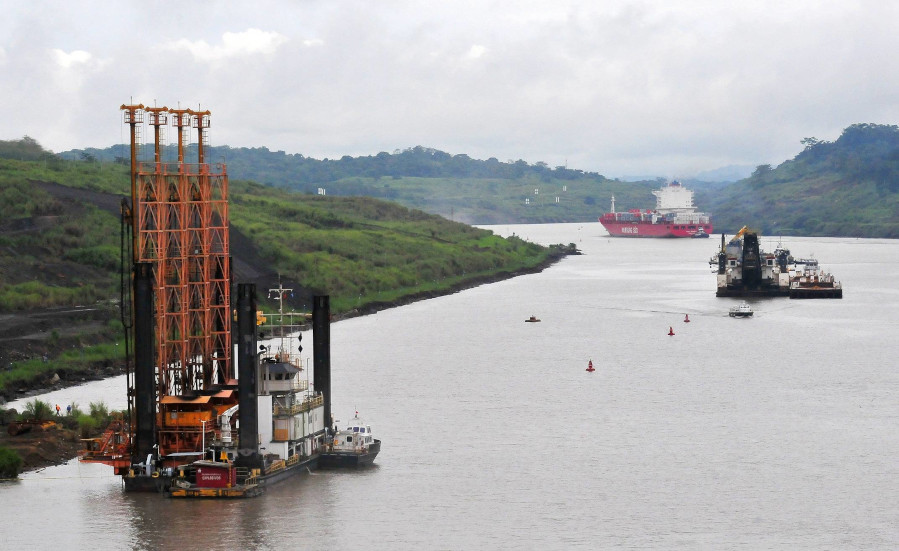The $5.2-billion expansion of the Panama Canal recently reached an important milestone with the completion of dredging efforts on the famed Culebra Cut.
In five years, more than 3.2 million cubic meters of material have been removed from the 14-kilometer-long cut, increasing its width to 280 m and deepening the navigation passage an additional 1.2 m.
Enlarging the Culebra Cut, the narrowest segment of the historic waterway, is a key part of the Third-Lane Expansion Project. When complete in 2015, the project will allow the passage of massive post-Panamax cargo vessels.
“Gradually, we are completing all the projects that make up the expansion program,” said Jorge L. Quijano, administrator for the Panama Canal Authority (ACP).
The waterway's maximum vessel size is dictated by the dimensions of the locks at both entrances. Currently, the largest ships using the canal must fit the dimensions of the existing locks, which are 294.13 m long and 32.31 m wide with a 12.04-m-deep draft. The new locks will be 366 m long and 49 m wide with a 15.2-m-deep draft.
Thus, the project involves a substantial widening and deepening of the waterway’s navigation channel as well as the approach channels at either entrance. Overall, the work will require dredging more than 50 million cu m of material. For additional draft, the level of Gatun Lake will be raised by about half a meter, to 27.1 m.
The deepening and widening of the canal entrances has been completed. With the conclusion of dredging operations on the Culebra Cut, the only part of the navigation channel still being expanded is Gatun Lake, where portions are being widened to allow two-way traffic. Canal officials say all the dredging for the expansion project will be completed by the end of the year.
The Culebra Cut, which bisects the Continental Divide, represented one of the more difficult phases of the dredging works. While hard basalt geology required extensive blasting, the waterway—the narrowest portion of the canal's navigation channel—offered only limited space in which to blast. Further, these operations had to take place without interrupting the flow of ship traffic.
In fact, excavating the cut was one of the greatest construction challenges when the original canal was being built. Then, the U.S. excavated almost 90 million cu m of material to create the passageway as well as 20 million cu m deposited by landslides.
The expansion project is now more than half completed. While originally slated for completion by October 2014, the centenary of the waterway’s initial opening, officials with the ACP say construction delays have pushed the opening of the new canal locks to mid-2015.



Post a comment to this article
Report Abusive Comment